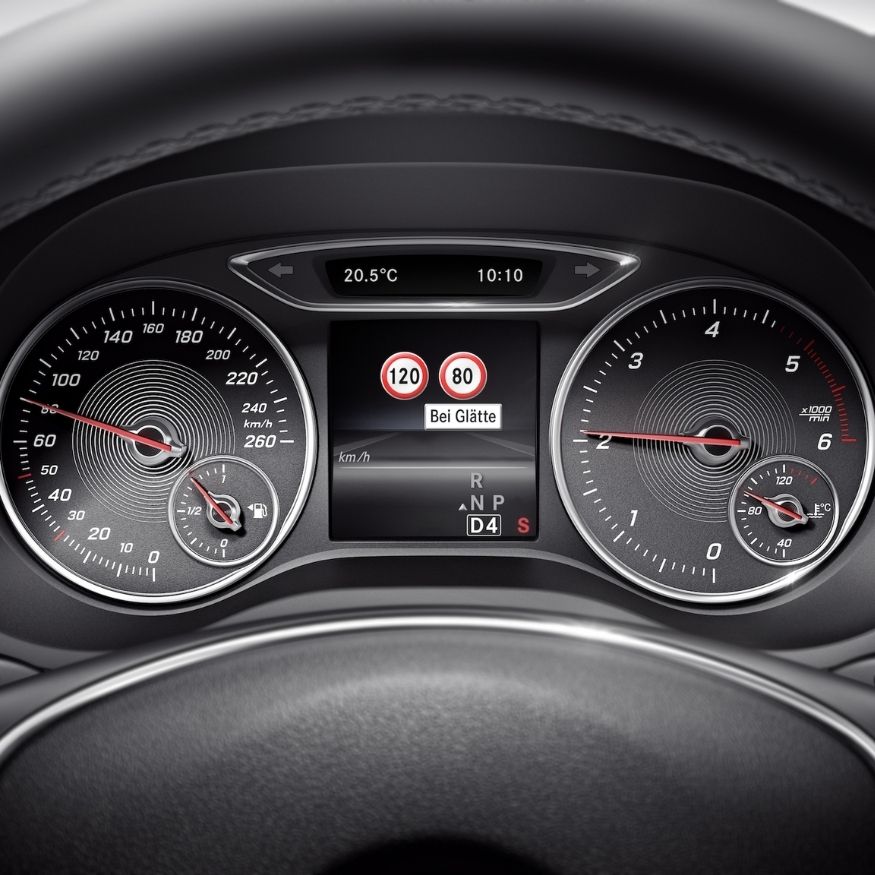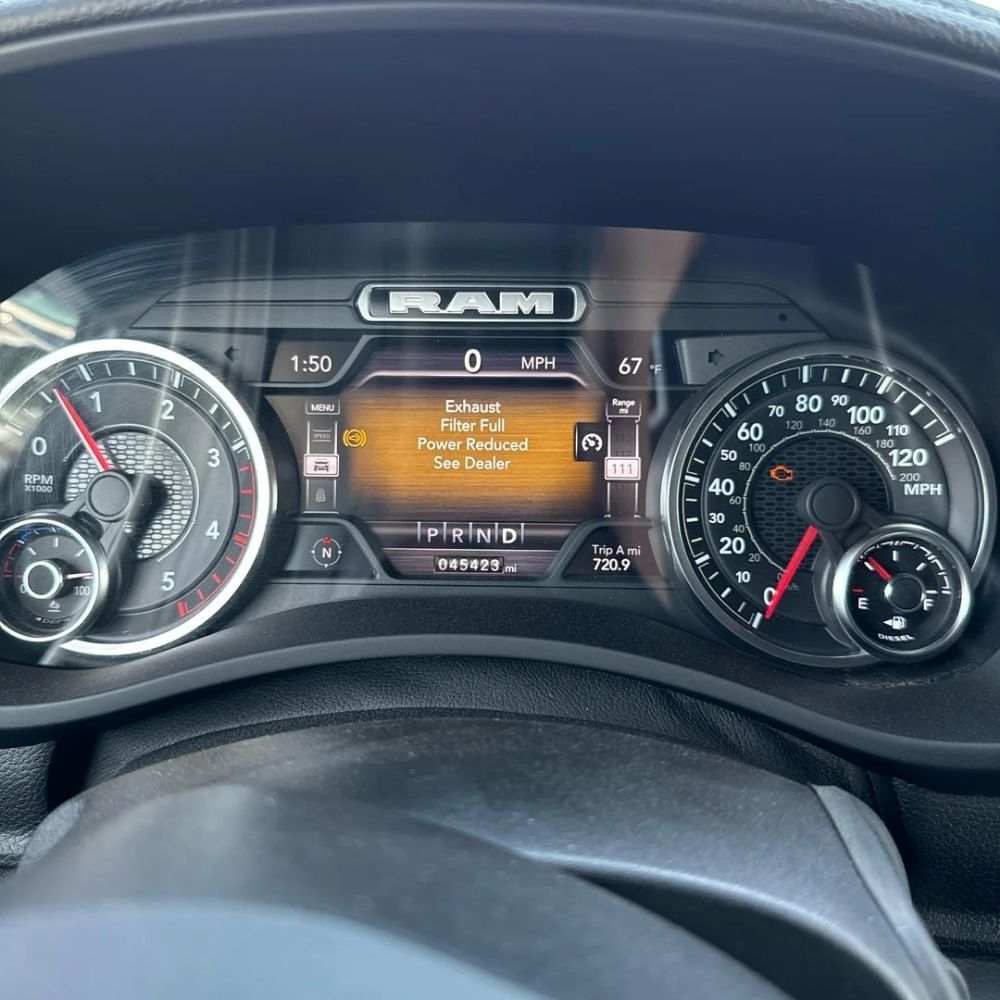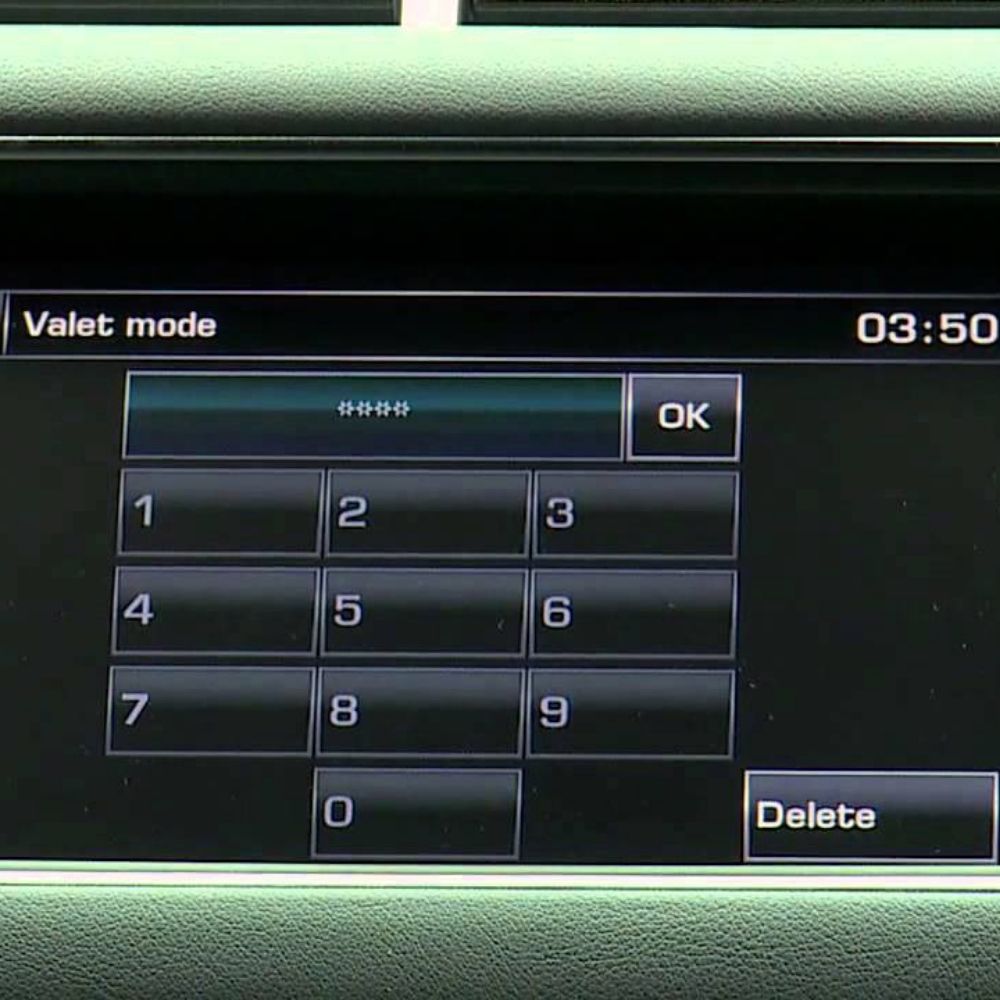
Is 00778 Audi Code Indicating a Faulty Steering Sensor?
Contents
- 1. What Does the 00778 Audi Code Mean for Your Vehicle?
- 2. What are the Primary Symptoms Associated with the 00778 Audi Code?
- 3. What are the Common Causes Triggering the 00778 Audi Code?
- 4. How Can You Diagnose the 00778 Audi Code Effectively?
- 5. What Tools and Equipment are Essential for Addressing the 00778 Audi Code?
- 6. Step-by-Step Guide: How to Fix the 00778 Audi Code
- 7. Can Wheel Alignment Issues Trigger the 00778 Audi Code?
- 8. What Role Does Software Play in Resolving the 00778 Audi Code?
- 9. How Critical is Calibration After Replacing the Steering Angle Sensor?
- 10. What Are the Risks of Ignoring the 00778 Audi Code?
- 11. Can a Low Battery Cause the 00778 Audi Code to Appear?
- 12. What Steps Should You Take After Replacing the Steering Angle Sensor?
- 13. How Does the ESP System Rely on the Steering Angle Sensor?
- 14. What are the Long-Term Effects of a Faulty Steering Angle Sensor?
- 15. How Can AutoExplain Help You Resolve the 00778 Audi Code?
The 00778 Audi Code indicates a fault with the Steering Angle Sensor (G85), which can lead to issues with the ABS, ESP, and power steering systems. Addressing this promptly through diagnosis, recalibration, or replacement ensures optimal vehicle handling and safety. AutoExplain offers expert remote support to guide you through the process, ensuring accurate diagnostics and effective solutions, supported by services like ECU programming, BCM adaptation, and navigation updates to enhance overall vehicle performance.
1. What Does the 00778 Audi Code Mean for Your Vehicle?
The 00778 Audi code signifies a problem with the Steering Angle Sensor (G85). This sensor is crucial for systems like ABS (Anti-lock Braking System), ESP (Electronic Stability Program), and power steering, as it provides real-time data about the steering wheel’s position. A malfunctioning G85 sensor can lead to impaired functionality in these systems, affecting vehicle handling and safety.
- The G85 sensor is a critical component in modern vehicles, continuously monitoring the steering angle to ensure stability and control.
- When the 00778 code appears, it signals that the data from the G85 sensor is either inconsistent, missing, or completely absent.
- Diagnosing and resolving this issue promptly is vital to maintaining the vehicle’s safety features and overall performance.
2. What are the Primary Symptoms Associated with the 00778 Audi Code?
Several symptoms can indicate that the 00778 Audi code is active. These symptoms often affect the vehicle’s handling and stability systems, including the ABS, ESP, and power steering.
- Illuminated Warning Lights: The ABS and ESP warning lights on the dashboard are the most common indicators.
- Power Steering Issues: The power steering might feel stiff or fail intermittently, making the vehicle harder to steer.
- ESP Malfunctions: The Electronic Stability Program might not function correctly, affecting the vehicle’s stability during sudden maneuvers.
- ABS Problems: The Anti-lock Braking System may not engage properly during hard braking, increasing the risk of skidding.
- Inaccurate Steering Data: Diagnostic tools may show incorrect or erratic steering angle readings.
These symptoms highlight the importance of promptly addressing the 00778 code to prevent potential safety hazards and ensure the vehicle operates as intended.
3. What are the Common Causes Triggering the 00778 Audi Code?
The 00778 Audi code can be triggered by several underlying issues. Understanding these potential causes is crucial for effective diagnosis and repair.
- Faulty Steering Angle Sensor (G85): The sensor itself might be defective due to wear and tear, electrical damage, or internal failure.
- Wiring Issues: Damaged, corroded, or loose wiring connections to the G85 sensor can disrupt the signal.
- Incorrect Installation: If the steering angle sensor was not installed correctly after a repair, it may not function properly.
- Misalignment: If the vehicle’s wheel alignment is off, it can cause the steering angle sensor to send incorrect data.
- Software Glitches: Sometimes, the issue can stem from software problems within the vehicle’s control modules.
- Battery Problems: Low or unstable voltage can sometimes cause errors in sensor readings.
- Environmental Factors: Exposure to extreme temperatures or moisture can damage the sensor and its connections.
Identifying the root cause requires a systematic approach, often involving diagnostic tools and a thorough inspection of the sensor and its related components.
4. How Can You Diagnose the 00778 Audi Code Effectively?
Diagnosing the 00778 Audi code requires a systematic approach to pinpoint the exact cause. Here’s a step-by-step guide to help you through the process:
-
Initial Scan:
- Use a diagnostic scan tool to confirm the presence of the 00778 code and check for any other related fault codes.
- Record all the codes to get a comprehensive view of the issues.
-
Visual Inspection:
- Inspect the wiring and connections to the Steering Angle Sensor (G85) for any signs of damage, corrosion, or looseness.
- Check the sensor itself for physical damage.
-
Live Data Analysis:
- Use the scan tool to monitor the live data from the G85 sensor.
- Observe the steering angle readings while turning the steering wheel to see if the data is accurate and consistent.
-
Basic Settings Check:
- Attempt to perform a basic setting or calibration of the G85 sensor using the diagnostic tool.
- Follow the manufacturer’s instructions for the specific Audi model.
-
Component Testing:
- If possible, use a multimeter to check the continuity and voltage at the sensor connector.
- Compare the readings with the manufacturer’s specifications to identify any electrical issues.
-
Wheel Alignment Check:
- Verify that the vehicle’s wheel alignment is within the specified range, as misalignment can affect the sensor readings.
-
Software Update:
- Check if there are any available software updates for the ABS or ESP modules.
- Update the software if necessary, following the manufacturer’s guidelines.
By following these steps, you can systematically narrow down the potential causes and accurately diagnose the 00778 Audi code.
5. What Tools and Equipment are Essential for Addressing the 00778 Audi Code?
Addressing the 00778 Audi code requires specific tools and equipment to accurately diagnose and fix the issue. Having these tools on hand will make the process more efficient and effective.
- Diagnostic Scan Tool: A high-quality scan tool that can read and clear Audi-specific fault codes, monitor live data, and perform basic settings or calibrations.
- Multimeter: For testing the continuity and voltage of the wiring and sensor connections.
- Wiring Repair Kit: Including wire strippers, crimpers, connectors, and heat shrink tubing for repairing any damaged wiring.
- Socket Set and Wrenches: For removing and installing the steering wheel, sensor, and related components.
- Alignment Equipment: If wheel alignment is suspected, you’ll need access to alignment racks and tools.
- Audi Repair Manual: A detailed repair manual specific to the Audi model you’re working on, providing wiring diagrams and component locations.
- Laptop with ODIS Software: For advanced diagnostics, software updates, and module programming, you might need access to the official ODIS (Offboard Diagnostic Information System) software.
- Steering Wheel Puller: To safely remove the steering wheel without damaging it.
Having these tools ensures you can perform a thorough diagnosis and complete the necessary repairs to resolve the 00778 Audi code effectively.
6. Step-by-Step Guide: How to Fix the 00778 Audi Code
Fixing the 00778 Audi code involves several steps, depending on the root cause. Here’s a comprehensive guide to help you through the repair process:
- Verify the Fault Code:
- Use a diagnostic scan tool to confirm the 00778 code and check for any related codes. Clear the codes and re-scan to ensure the issue persists.
- Inspect Wiring and Connections:
- Check the wiring and connectors leading to the Steering Angle Sensor (G85) for damage, corrosion, or loose connections. Repair or replace any damaged wiring.
- Check Sensor Installation:
- Ensure the sensor is correctly installed and properly seated. If it was recently replaced, verify it was installed according to the manufacturer’s instructions.
- Perform Basic Settings/Calibration:
- Use the diagnostic scan tool to perform a basic setting or calibration of the G85 sensor. Follow the specific procedure for your Audi model. This often involves turning the steering wheel lock-to-lock.
- Test Drive:
- After calibration, take the vehicle for a test drive to see if the warning lights reappear or if the steering issues persist.
- Replace the Steering Angle Sensor (If Necessary):
- If the basic settings fail or the sensor continues to provide incorrect readings, the G85 sensor may be faulty and need replacement.
- Disconnect the battery, remove the steering wheel (using a steering wheel puller if needed), and replace the sensor.
- Reconnect the battery and perform the basic settings calibration again.
- Check Wheel Alignment:
- If the issue persists, check the wheel alignment. Misalignment can cause the sensor to read incorrect data. Adjust the alignment as needed.
- Update Software:
- Ensure that the vehicle’s ABS and ESP modules have the latest software updates. Use the ODIS software or consult a dealer for updates.
- Final Test and Verification:
- After completing all repairs, clear the fault codes and perform another test drive to ensure the issue is resolved and no warning lights reappear.
By following these steps, you can systematically address the 00778 Audi code and restore the vehicle’s steering and stability systems to proper working order.
7. Can Wheel Alignment Issues Trigger the 00778 Audi Code?
Yes, wheel alignment issues can indeed trigger the 00778 Audi code. When a vehicle’s wheels are misaligned, the steering angle sensor may provide incorrect readings to the vehicle’s stability control systems.
- Incorrect Data: Misalignment can cause the steering wheel to be off-center when driving straight, leading the sensor to send inaccurate data about the steering angle.
- System Confusion: The vehicle’s ABS and ESP systems rely on accurate steering angle data to function correctly. Incorrect data can cause these systems to malfunction.
- Fault Code Activation: The discrepancy between the actual vehicle direction and the steering angle sensor’s reading can trigger the 00778 fault code.
Therefore, checking and correcting wheel alignment is a crucial step in diagnosing and resolving the 00778 Audi code, especially if other troubleshooting steps have not been successful.
8. What Role Does Software Play in Resolving the 00778 Audi Code?
Software plays a significant role in resolving the 00778 Audi code. Software updates and correct programming are essential for the proper functioning of the Steering Angle Sensor (G85) and related systems.
- Module Updates: Software updates for the ABS (Anti-lock Braking System) and ESP (Electronic Stability Program) modules can address known issues and improve sensor data interpretation.
- Calibration Data: The correct software ensures that the calibration data for the G85 sensor is accurate and properly integrated with the vehicle’s control systems.
- Compatibility: Software updates ensure compatibility between the sensor and the vehicle’s other electronic components, preventing conflicts that could trigger the 00778 code.
- Programming: In some cases, the G85 sensor or related modules may need to be reprogrammed to ensure proper functionality, especially after a replacement.
Therefore, ensuring that the vehicle’s software is up to date and correctly programmed is a critical step in resolving the 00778 Audi code.
9. How Critical is Calibration After Replacing the Steering Angle Sensor?
Calibration is extremely critical after replacing the Steering Angle Sensor (G85). Without proper calibration, the sensor cannot accurately provide steering angle data to the vehicle’s control systems.
- Accurate Data: Calibration ensures that the sensor’s readings align with the actual steering wheel position, which is vital for the correct operation of ABS, ESP, and other stability control systems.
- System Functionality: Without calibration, the vehicle’s systems may receive incorrect data, leading to malfunctions, warning lights, and potential safety hazards.
- Fault Code Prevention: Proper calibration helps prevent the recurrence of the 00778 Audi code and other related fault codes.
Therefore, always perform a calibration procedure using a diagnostic scan tool after replacing the Steering Angle Sensor to ensure the vehicle’s systems function correctly.
10. What Are the Risks of Ignoring the 00778 Audi Code?
Ignoring the 00778 Audi code can lead to several risks, affecting the vehicle’s safety and performance.
- Compromised Safety Systems: The ABS (Anti-lock Braking System) and ESP (Electronic Stability Program) may not function correctly, reducing the vehicle’s ability to prevent skidding and maintain stability during emergency maneuvers.
- Power Steering Issues: The power steering system might become erratic or fail, making the vehicle harder to control, especially at low speeds.
- Increased Accident Risk: The combination of compromised safety systems and steering issues can increase the risk of accidents, particularly in adverse driving conditions.
- Further System Damage: Continued operation with a faulty steering angle sensor can potentially damage other related components and systems.
- Failed Inspections: Many regions require safety inspections, and a vehicle with active ABS or ESP warning lights may fail the inspection.
Promptly addressing the 00778 Audi code is crucial to avoid these risks and ensure the vehicle operates safely and reliably.
11. Can a Low Battery Cause the 00778 Audi Code to Appear?
Yes, a low battery can sometimes cause the 00778 Audi code to appear. Insufficient voltage can lead to erratic readings from sensors and modules within the vehicle’s electronic systems.
- Voltage Fluctuations: A low battery can cause voltage fluctuations that interfere with the proper operation of the Steering Angle Sensor (G85).
- Communication Errors: Low voltage can disrupt communication between the sensor and the vehicle’s control modules, leading to fault codes.
- False Positives: In some cases, a low battery can trigger the 00778 code even if the sensor itself is functioning correctly.
Checking the battery voltage and ensuring it is within the specified range is a good practice when diagnosing the 00778 Audi code, especially if other potential causes have been ruled out.
12. What Steps Should You Take After Replacing the Steering Angle Sensor?
After replacing the Steering Angle Sensor (G85), several steps are crucial to ensure the system functions correctly and to prevent future issues.
- Calibration: Perform a basic setting or calibration of the new sensor using a diagnostic scan tool. Follow the manufacturer’s instructions for the specific Audi model.
- Clear Fault Codes: Clear any stored fault codes related to the steering angle sensor from the ABS and ESP modules.
- Test Drive: Take the vehicle for a test drive to verify that the warning lights do not reappear and that the steering and stability systems are functioning correctly.
- Monitor Live Data: Use the scan tool to monitor the live data from the new sensor while driving, ensuring that the readings are accurate and consistent.
- Check Wheel Alignment: Verify that the wheel alignment is within the specified range, as misalignment can affect the sensor readings.
- Software Update: Ensure that the vehicle’s ABS and ESP modules have the latest software updates, which can improve sensor data interpretation and system performance.
- Final Verification: Perform a final scan to ensure that no new fault codes have been generated and that the system is operating as expected.
Following these steps will help ensure the successful replacement and integration of the new Steering Angle Sensor into the vehicle’s systems.
13. How Does the ESP System Rely on the Steering Angle Sensor?
The Electronic Stability Program (ESP) system relies heavily on the Steering Angle Sensor (G85) to function effectively. The sensor provides critical data about the driver’s intended direction, allowing the ESP system to make informed decisions about vehicle stability.
- Directional Intent: The ESP system uses the steering angle data to determine the driver’s intended direction of travel.
- Stability Control: By comparing the steering angle data with other sensor inputs (such as wheel speed and yaw rate), the ESP system can detect if the vehicle is starting to skid or lose control.
- Corrective Actions: If a loss of stability is detected, the ESP system can apply individual brakes or reduce engine power to help the driver maintain control of the vehicle.
- Real-Time Adjustments: The ESP system continuously monitors the steering angle and makes real-time adjustments to keep the vehicle stable and on its intended path.
The accurate and reliable data provided by the Steering Angle Sensor is essential for the ESP system to function effectively and enhance vehicle safety.
14. What are the Long-Term Effects of a Faulty Steering Angle Sensor?
The long-term effects of a faulty Steering Angle Sensor (G85) can be significant, impacting both the vehicle’s safety and its overall performance.
- Decreased Safety: A faulty sensor can compromise the effectiveness of the ABS (Anti-lock Braking System) and ESP (Electronic Stability Program), reducing the vehicle’s ability to prevent skidding and maintain stability during emergency maneuvers.
- Increased Wear and Tear: The vehicle’s systems may compensate for the inaccurate sensor data, leading to increased wear and tear on components such as brakes and tires.
- System Instability: The vehicle’s control systems may become unstable, leading to unpredictable handling and potential safety hazards.
- Reduced Fuel Efficiency: The vehicle’s engine and transmission control systems may not operate optimally, resulting in reduced fuel efficiency.
- Higher Repair Costs: Ignoring a faulty sensor can lead to further damage to related components and systems, resulting in higher repair costs in the long run.
- Compromised Resale Value: A vehicle with known safety issues may have a reduced resale value.
Addressing a faulty Steering Angle Sensor promptly is essential to avoid these long-term effects and maintain the vehicle’s safety and performance.
15. How Can AutoExplain Help You Resolve the 00778 Audi Code?
AutoExplain specializes in providing expert remote support for diagnosing and resolving automotive issues, including the 00778 Audi code. Our experienced technicians can guide you through the process with precision and efficiency.
- Remote Diagnostics: We offer remote diagnostic services to accurately identify the root cause of the 00778 code.
- Step-by-Step Guidance: Our experts provide step-by-step instructions on how to inspect, test, and repair the Steering Angle Sensor (G85) and related components.
- Calibration Assistance: We can assist you with performing the necessary calibration procedures using diagnostic tools.
- Software Support: AutoExplain can provide support for software updates and module programming to ensure proper system functionality.
- Expert Advice: Our technicians can answer your questions and provide expert advice on the best course of action for your specific Audi model.
With AutoExplain, you gain access to professional support and guidance, ensuring you can effectively resolve the 00778 Audi code and restore your vehicle to optimal performance. Contact us via WhatsApp at +1(936)2896695 or email at [email protected] for assistance. Visit our website at AutoExplain.com. Our office is located at 1500 N Grant ST Sten Denver, CO 80203.
Is your Audi showing the 00778 code, and are you unsure how to fix it? Contact AutoExplain today for expert remote support. Our team of experienced technicians is ready to help you diagnose and resolve the issue quickly and effectively. Reach out via WhatsApp at +1(936)2896695 or email us at [email protected]. Don’t let a faulty steering angle sensor compromise your vehicle’s safety and performance. Trust AutoExplain to provide the professional guidance you need. Visit AutoExplain.com now. We are located at 1500 N Grant ST Sten Denver, CO 80203.


How to Activate Mercedes-Benz Traffic Sign Assist Function

How to Fix the “Exhaust Filter Full” Warning Message on the Instrument Cluster of JLR Vehicles







